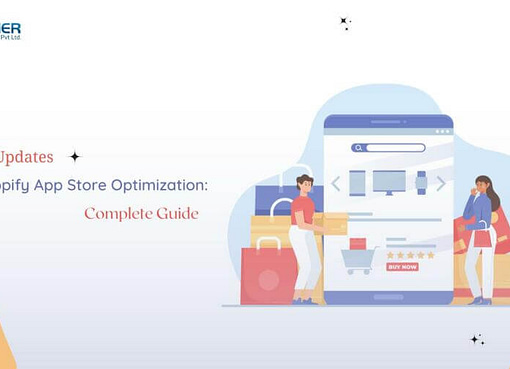The world of branding can be confusing, especially for beginners. You’ve heard about brand personality, identity, and positioning. But what the heck is a brand promise? Is it something you should have?
In this article, we’ll give you a crash course in what a brand promise is, how it can benefit your business, and how you can create one!
What is a brand promise?
In simple terms, a brand promise is what your company promises to deliver to customers. It’s the type of experience they can expect when interacting with your business. It’s the essence of what your brand stands for.
Think of it this way: a brand is like a person. A brand promise is what that person says they will do or what they are known for.
For example, Nike’s brand promise is “to bring inspiration and innovation to every athlete* in the world.”
*If you have a physical disability that prevents you from playing sports, don’t worry! Nike also has a brand promise for you: “To unite the world through sport and help create a healthier planet.”
Usually, the brand promise is something that sets your company apart from the competition. It’s what makes you unique.
What are the benefits of having a brand promise?
There are several benefits of having a clear brand promise, including:
It differentiates you from the competition:
You’ll instantly stand out if you can make a promise that no one else in your industry is making. How? Because you’re the only one making that specific promise.
It creates loyalty:
Customers who trust you and know what to expect from your brand are more likely to stick around. A brand promise can help turn one-time buyers into lifelong fans.
It guides your marketing efforts:
Your brand promise should be at the heart of all your marketing and advertising campaigns. It’s a North Star that you can use to keep your messaging on track.
It shapes your customer service:
Your brand promise should also inform how you train your customer service team. After all, they’re the ones who will be interacting with customers daily.
It helps you focus your marketing efforts:
You can create content and campaigns aligned with your brand promise by zeroing in on what experience you want customers to have. This will help you attract the right customers and repel the ones who aren’t a good fit.
It builds trust:
You’ll build trust with your customers if you can consistently deliver on your brand promise. And as we all know, trust is essential for any successful relationship!
How to create a brand promise: Steps
Now that we’ve answered the question “what is a brand promise?” it’s time to create one for your business! Here’s how:
1. Define what you want customers to feel.
The first step is to define what emotions you want customers to feel when they interact with your brand. Do you want them to feel happy? Excited? Inspired?
Your brand promise should be based on the emotions you want customers to feel. For example, if you want customers to feel happy, your brand promise could be “to make every day a little brighter.” And if you want customers to feel excited, your brand promise could be “to make every experience an adventure.”
Remember, your brand promise should be based on what you want customers to feel, not what you want them to do. For example, a common mistake businesses make is promising “to make customers happy.”
While this may be your goal, it’s not something you can promise. Why? Because happiness is subjective. What makes one person happy may not make another person happy. Instead, focus on what you can control: the emotions you want customers to feel.
2. Keep it short and sweet.
Sometimes, the hardest part of creating a brand promise is keeping it short. After all, you want to make sure you include everything!
But the truth is, shorter is better regarding brand promises. Why? Because you want customers to be able to remember it. And the best way to do that is to keep it short and sweet.
A good rule of thumb is to keep your brand promise to one or two sentences. That way, it’s easy for customers to remember and repeat.
3. Make it realistic.
One of the biggest mistakes businesses make is making a brand promise they can’t keep. For example, let’s say you run a small business and want to expand.
You might be tempted to make a grandiose promise like “to be the biggest and best in the world.” But if you’re not prepared to back that up, it will come back to bite you.
Instead, make a realistic promise that you can keep. For example, “to be the best in our town” or “to provide the best customer service experience.” These are promises you can keep!
4. Test it out.
Once you’ve created your brand promise, it’s time to test it out! Share it with your team and see what they think. Does it accurately reflect your brand? Is it something you can realistically keep?
If you’re unsure, try sharing it with some customers and seeing what they think. After all, they’re the ones you’re making the promise to!
Tip: if you’re testing it out with customers, ensure you’re testing it with your ideal customers. That way, you can get specific feedback from your target audience. A brand strategist can also help you test and refine your brand promise.
5. Make it official.
Once you’ve created and tested your brand promise, it’s time to make it official! Add it to your website, social media profiles, and anywhere else your customers might see it.
And most importantly, make sure you’re living up to it! Remember, a brand promise is only as good as the actions behind it. So if you want to build trust and loyalty with your customers, you need to make sure you’re delivering on your promise.
Examples of effective brand promises
There are a lot of different ways to create a brand promise. And what works for one business may not work for another. But to give you some inspiration, here are a few examples of effective brand promises:
Nike: “To bring inspiration and innovation to every athlete in the world.”
Take a look at Nike’s brand promise. What do you notice? First, it’s based on the emotion of inspiration. Second, it’s short and sweet. And third, it’s realistic. After all, Nike is a global company with millions of customers!
By keeping its promise short and sweet, Nike makes it easy for customers to remember and repeat. And by making it realistic, they build trust and credibility with their customers.
Tiffany & Co.: “To celebrate love.”
Think about what comes to mind when you think of Tiffany & Co. Chances are, you think of luxury, class, and elegance. And that’s exactly what their brand promise reflects. They sell an emotion: love. And they do it in a way that’s unique to their brand.
Tiffany & Co. keeps its promise short and sweet, making it easy for customers to remember. And by focusing on love, they tap into a universal and timeless emotion.
Final Thoughts
A brand promise is a critical part of your branding strategy. It’s what sets you apart from your competition and what customers can expect from you.
When creating your brand promise, keep it short, sweet, and realistic. And make sure you test it out before making it official! By following these tips, you can create a brand promise that’s true to your brand and resonates with your customers.







Comment here